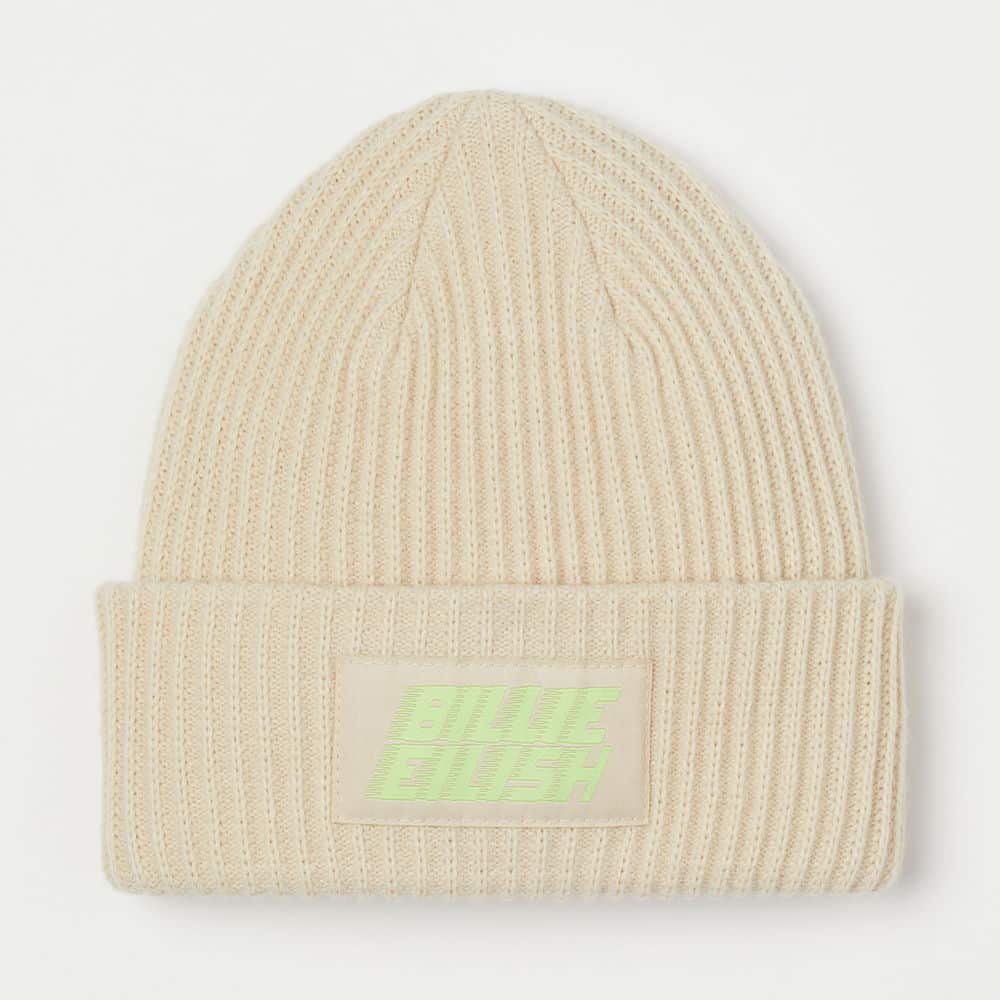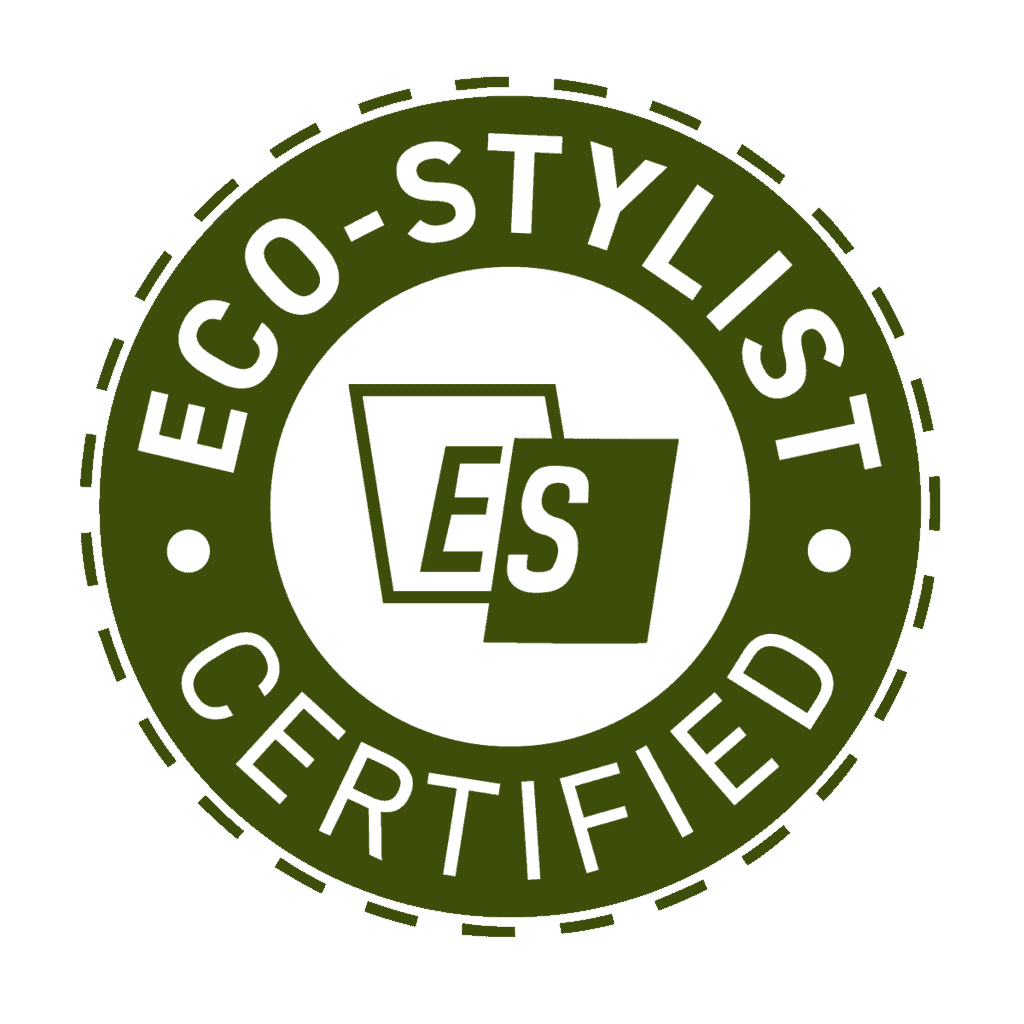The new Billie Eilish x H&M collection dropped on January 2, 2020, with H&M hailing it as “edgy and sustainable merch.” Call the collaboration what you will, just don’t call it sustainable.
What the collection loudly puts forth in eco claims, it lacks in transparency and substance. No, we’re not saying that Billie Eilish is a bad guy, but calling this collection sustainable without giving customers clear indicators of why, which is typical of H&M, is greenwashing.
H&M is hardly alone in their assertion. The Independent, New York Post, Fox Business, and WWD all name-dropped “sustainable” when describing the collaboration.
The problem: none of these publications investigated the sustainability claim for themselves, or even worse, they were aware of the issue and didn’t address it.
The New York Post states, “items in the line are designed from materials sourced in a more sustainable way” with no explanation of what “more sustainable” really means. Buzzwords such as “sustainable” may sound trustworthy and comfortable, but they’re also vague. If “sustainable” is not further articulated, it doesn’t hold any weight.

“It’s all made from sustainable materials,” states Teen Vogue, a “fact” which should have been checked before they published it. In actuality, only 2 of 16 items in the collection are part of H&M’s Conscious collection (which, by the way, isn’t even that impressive), while the other 14 items are made as any other piece of fast fashion: with planned obsolescence and by non-transparent means.
A Closer Look at the Collection
The collaboration’s 16-piece collection consists of 2 “conscious” pieces: a pair of joggers and a t-shirt. Regarding these 2 pieces, H&M notes that the cotton content is in fact organic, period. That is the only information you’ll find on the product pages about how they are sustainable, and this is disappointing.
For a brand to boast its sustainability, and then be this brief and nonspecific, is odd. One would think putting a buzzword such as “sustainable” in the spotlight would mean no loose ends to get tied up in.
Even if we give H&M the benefit of the doubt and assume the 2 Conscious pieces are sustainably made, does having 2/16, or 12.5%, of your collection sustainably made give you the right to call it a “sustainable merch drop”? Even a simple majority is at least over 50%.
When Eco-Stylist is researching and evaluating sustainable brands, the threshold for calling a brand sustainable is for at least 50% (a simple majority) of their collections to be sustainably made. Most of our approved brands even go the extra mile, making 100% of their pieces with eco-friendly fabrics.
We’re transparent about all of this information, too. This is because we give our consumers credit, and they can hold us accountable for our words.
So, H&M, if you’re going to boast about your sustainability, why not put your money where your mouth is?
The Fabrics
H&M states that “all of the clothing has been made from materials sourced in a more sustainable way.” 87.5% of the Billie Eilish collection is made from cotton, polyester, and acrylic.

Polyester and acrylic are both derived from oil, not recycled or repurposed oil, making them among the least sustainable materials to use in clothing. As for cotton, it’s a thirsty crop that uses more chemical pesticides than any other crop.
On the bright side, 1 of the 14 pieces not in the Conscious line (the printed sweatshirt dress) is noted to have organic cotton in it. Also, H&M reported that in 2020 the majority of their cotton is BCI (Better Cotton Initiative) cotton, which is a step in the right direction. EcoCult notes that BCI cotton is better than conventional cotton, but less sustainable compared to organic cotton.
This is quality information that would benefit consumers to know. However, you won’t find a shred of information about BCI cotton or the sustainability of these pieces on the collaboration’s product pages. Why? We don’t know, but it doesn’t add to H&M’s credibility.
The remaining 12.5% of the collection (the 2 Conscious pieces) is made from 60% organic cotton, 40% polyester, and 100% organic cotton. Even in the Conscious line there is no mention of recycled polyester, something many conscious consumers expect.
Before we go too deep into fabrics, let’s not forget that they are only one part of how a brand can be more sustainable. A brand needs to take larger, more serious initiatives than H&M is in order to be considered sustainable, such as producing higher quality clothing, moving away from a business model that encourages people to buy things they don’t need (only to dispose of them later), reducing waste in their supply chain, becoming a member of 1% for the Planet, and ensuring fair wages and safe working conditions, for example.
The People Side
With all this talk about sustainability, let’s not forget about the people who make our clothes. And when it comes to those people, the H&M x Billie Eilish collection is silent.
While disappointing, it comes as no surprise. Previously, H&M had promised to pay living wages across their supply chain by 2018. Well, 2018 came and went, and H&M has yet to fulfill that promise.
H&M says their mission is to “democratize fashion and make it available to all,” a seemingly noble intention which sounds pretty exciting. But you can’t democratize fashion by making it affordable for some people at the expense of others. Both slave labor and sexual abuse have been found to be a part of H&M’s supply chain.
H&M’s “all talk, no action” approach is designed to fool consumers into believing they’re doing good when they buy from collections like this. But we’re smarter than that.
So now we’re going to ask the same question that the Norwegian Consumer Authority asked H&M this summer: what’s sustainable about your Conscious collection?
The Cure for All this Greenwashing

Ultimately, if H&M can’t effectively explain how their collection is sustainable, how are you supposed to trust them?
The cure for faulty claims of sustainability is pretty simple: transparency. Until they give you that, we’re calling this collection out for what it is – unsustainable.
Today there are organizations filling in the information gaps and researching brands for you so that you can cut through the noise. Organizations like us (Eco-Stylist), who, by the way, have a pretty current assessment of H&M.
Where to Find Real Conscious Clothes
For sustainable brands, check out our brand guide of 90+ certified sustainable brands. These brands have substance to back their claims!
Bonus: Check Out This Podcast on H&M’s Greenwashing
We chatted about this article and the H&M x Billie Eilish collection on the Underunderstood podcast! You can listen to that conversation on Spotify or wherever you get your podcasts.
Or click below to listen here.
*The information in this article regarding H&M’s product pages is current as of 1/10/20. As we discuss on the podcast episode, H&M hid information after being criticized, so you may notice changes or missing information on their website.

Garik Himebaugh is the founder of Eco-Stylist, the go-to resource to find ethical clothing. He’s also a sustainable personal stylist and international speaker on all things sustainable fashion. Garik loves coffee, climbing, and clothes.










2 thoughts on “Greenwashing Alert: H&M and Billie Eilish Collaboration”
I do wonder why this article is labelling organic cotton as “sustainable”, maybe investigate that claim yourself as well? If you put a “sustainable” label on organic cotton while it makes such a small difference regarding environmental impact, then what does sustainability even mean? It is making the problem even worse, since it enhances guilt-free consumption. Thus, this label turns a less-bad initiative (organic cotton) into an even worse option than regular cotton…
Thank you for your comment. It’s important to note that sustainable is a goal not a destination. It’s all about progress. Meaningful, well intentioned progress.
Most of the sustainable brands we work with, which have passed Remake’s sustainable brand criteria (arguably the highest bar for what defines a sustainable brand) use organic cotton. They do this not because they’re settling but because it’s a meaningful step in the right direction as they continue to evolve. I don’t know a single sustainable brand that’s like “hey, we’ve got organic cotton, it’s perfect, our job is done here.” Scale is very important to keep in mind here too – there isn’t enough hemp or other new innovative fabrics for every brand to use today.
What’s good about organic cotton?
1. Cotton is the most pesticide intensive crop on earth. Organic cotton doesn’t use these toxic chemical pesticides. A very big plus.
2. Organic cotton feeds more sustainable farming practices, including better soil health and water conservation.
We acknowledge that organic cotton isn’t perfect. It still requires a lot of water. But the reality is its one of the best fabrics available today that can be scaled (no pesticides, no micro plastics). Best estimates still place 1% of cotton as organic so replacing that other 99% would have a very meaningful impact. And new fabrics like hemp, tencel, etc. will catch up and become a lot more popular.
The idea that promoting organic cotton is somehow worse than using and promoting regular cotton greatly underestimates the intelligence of people (consumers). Guilt-free consumption is happening everyday but it’s not going towards sustainable fashion – it’s going towards fast fashion.